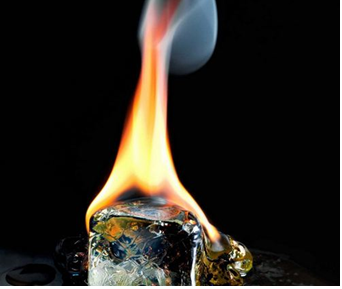 DWOG-Hyd 2021
DWOG-Hyd 2021
2021-12-18
来自话题:热/动力学
邢夏莲等-中国石油大学(华东)-环戊烷和石墨对水基脱盐的二氧化碳/三氯甲烷形成动力学的影响
 收藏
收藏
Session 5 - Oral 7
Effect of Cyclopentane and Graphite on the Kinetics of CO2/C3H8 Formation for Hydrate-Based Desalination
Xialian Xing1, Jibao Zhang1, Tianbiao He1, 2, 3*
1 Department of Gas Engineering, College of Pipeline and Civil Engineering, China University of Petroleum (East China), Qingdao 266580, China
2 Shandong Provincial Key Laboratory of Oil & Gas Storage and Transportation Safety, Qingdao 266580, China
3 Qingdao Engineering Research Center of Efficient and Clean Utilization of Fossil Energy, Qingdao 266580, China
Abstract: Fresh water plays a vital and irreplaceable role in ecosystems and human societies. Desalination is regarded as a pivotal means to solve the global water crisis for sustainable development. The mainstream of seawater desalination in the world is still traditional technologies based thermal and membrane, which are limited mainly by energy intensive. Hydrate-based desalination (HBD) technology is attractive due to energy-efficient and easy availability of hydrate formers. In order to increase the yield of fresh water, CO2 was considered to be major hydrate former and C3H8 employed as co-guest gas to make the thermodynamic conditions of CO2 hydrate formation more moderate. Besides, cyclopentane (CP) and graphite were used as promoter in this study. The effects of CP/liquid phase volume ratios from 0.05 to 0.25 and graphite with different sizes (75μm, 25μm, 6.5μm, 1.6μm) at 275.6K and 2.5MPa were discussed to evaluate the kinetics of CO2/C3H8 hydrate. The results showed that CP as additive promoted the formation of CO2/C3H8 hydrate. When CP/liquid phase ratio was increased from 0.05 to 0.15, the rate and final molar mass of gas consumption were both significantly increased. With a CP/liquid ratio of 0.25, the final conversion of water to hydrate was the highest, which could reach 35.63%. Moreover, on the basis of CP/liquid ratio of 0.25, the addition of graphite further promoted the rate of hydrate formation. The graphite particles with smaller sizes provided more sites for hydrate nucleation and growth, however, the low conversion as a result of the limited mass caused by the dense shell with the rapidly growth of hydrate. It was proved that graphite size of 6.5μm has the most excellent performance in shortening the induction time and increasing the gas consumption rate and the final conversion of water to hydrate. The findings acquired in this study will contribute to selecte suitable additive in the HBD process for obtaining more fresh water quickly.
Keywords: gas hydrate, desalination, cyclopentane, graphite, kinetics

 UPC-WY
27帖子
UPC-WY
27帖子
 Haotian Wang
9帖子
Haotian Wang
9帖子
